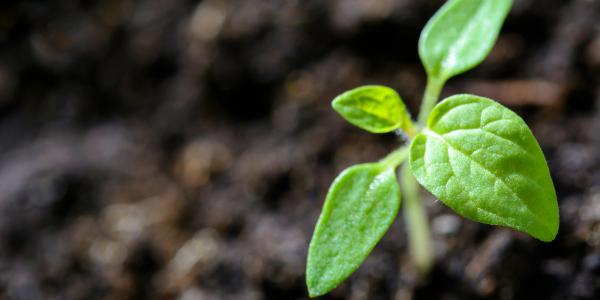WashU researchers identify protein involved in costly infestations, pointing the way to possible protections.
Aphids, grasshoppers, and other bugs aren’t the only pests that can quickly wipe out a crop. Many harmful bacteria have evolved ways to bypass a plant’s defenses. A once-healthy tomato plant can quickly turn sick and blotchy, thanks to microscopic foes armed with an arsenal of tricks.

In a recent study, researchers at WashU have identified a tool that helps the bacteria Pseudomonas syringae turn a plant’s fundamental biology against itself. The findings, published in the prestigious journal mBio, could eventually lead to new approaches to protecting crops, said co-author Barbara Kunkel, a professor of biology. “If we can understand the mechanism behind the infection, we can potentially stop it,” she said.
The lead author of the study is Chia-Yun “Cynthia” Lee, a graduate student in Kunkel’s lab at the time of the research. She is now a postdoctoral researcher in the Department of Biology. Maya Irvine, an undergraduate research assistant at the time of the research, is another co-author.

Plant-associated bacteria are known to exploit a crucial plant hormone called auxin, Kunkel said. The hormone, found in all land-based plants from mosses to trees, has a variety of functions, including promoting growth and, crucially, regulating responses to the environment.
The WashU team suspects P. syringae and other bacteria have developed a way to “listen” to the plant’s auxin signaling process. When the germs notice that the plant is producing more auxin, they ramp up their attack. “The release of auxin tells the bacteria that the attack is working, so they multiply and become even more aggressive,” Kunkel said. “It’s a sneaky way to take advantage of and manipulate the plant’s biology.”

But a key question remained: How can bacteria pick up on a plant’s chemical signal? To answer that question, the WashU team took a close look at the molecular and genetic machinery of P. syringae as it attacked thale cress (Arabidopsis thaliana), a plant from the mustard family used in many studies at WashU and elsewhere. “We started hunting for bacterial genes that could be involved in sensing auxin, and we found a good candidate,” Lee said.
The team identified a particular protein called PmeR that seemed to fit the bill. Not only could it detect auxin — or, more specifically, a separate compound associated with auxin — it can also activate certain genes in bacteria that make the germs more aggressive and virulent. “Once bacteria sense indirectly that the auxin is there, they change their gene expression to set themselves up to better survive inside the plant,” Kunkel said.
This insight into the complicated crosstalk between plants and their bacterial attackers could eventually lead to new approaches to protecting crops, Kunkel said. There’s no obvious way to target the PmeR protein in wild bacteria, and it’s certainly not possible to block or remove the vitally important hormone auxin from tomatoes or any other plant, but there may be another possible approach.
Kunkel’s group is working with Joe Jez, the Spencer T. Olin Professor in Biology, to see if it might be possible to make pathogenic bacteria “blind” to auxin. “If we understood more about how bacteria sense auxin, we could potentially develop a compound that mimics auxin or auxin-related molecules and confuses the bacteria and blocks this system that makes them virulent,” Kunkel said. “Perhaps we could spray fields with this compound.”
Before any such compound could become a reality, researchers would need to better understand the physical structure of the molecules involved. “That’s where Joe comes in,” Kunkel says. “He has the tools and the insight to figure out even the most complicated structures.”
Researchers are still a long way away from stopping P. syringae or other bacteria in their quest to find new plants to infect. But understanding the tools of the attack remains an important and exciting development, Lee said. “The communication between bacteria and plants is more complicated than we originally thought, but we’re making progress.”
Header image credit: AS Photography/Pexels





